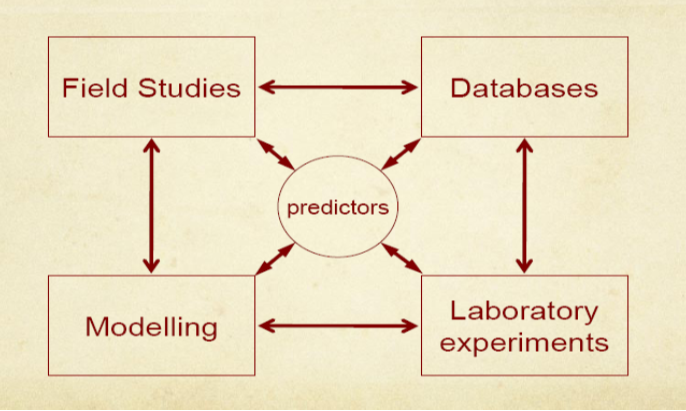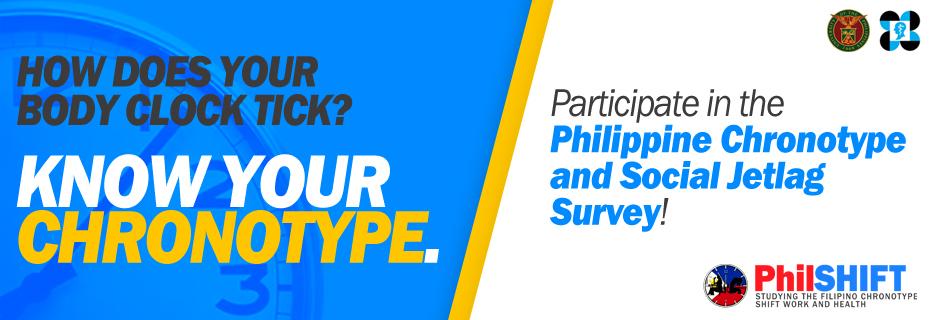About Us
The role of the circadian (biological) clock which controls our physiology, behavior, mental and physical performance is not yet studied in the Philippine population. Our internal biological clock produces its own internal day synchronization to the external 24-hour clock primarily by the light-dark cycle and by many other possible time-giving cues or zeitgebers. Social jetlag, with symptoms similar to the usual jetlag due to travelling at different time zones, can be experienced by individuals when there are discrepancies between the internal biological time and the external social time. This is a consequence of circadian system desynchronization with the external time. The relationship between the internal time and external time is called phase of entrainment. Different individuals may differ in their phase of entrainment and therefore have different chronotypes. Chronotype plays a key role in an individual's ability to adjust to shift work. It can be used to
- predict the degree of sleep disturbance and the degree of distress the shift workers will experience
- choose work schedules
- choose proper time to administer drugs or perform medical tests
The study of chronotype and the biological clock falls under the field of chronobiology. Chronobiology is the field of biology that examines periodic (cyclic) phenomena in living organisms and their adaptation to solar and lunar related rhythms. These cycles are known as biological rhythms. More information about chronobiology and related researches could be found at the EUCLOCK Information System (EUCLIS).
Approaches in Shift Work Research
Ideally, shift work research should encompass different approaches to be able to thoroughly investigate its effect on the worker's health and well-being. To be able to achieve this, we use an adaptation of the Katermann et. al. framework of different approaches that are interrelated to one another in determining predictors that can estimate the effect of shift-work on an individual's health, and well-being.

We can investigate predictors using different approaches. One approach is via laboratory studies. Laboratory studies can be either experiments or observational studies performed in the laboratory or in a non-real-life setting. Laboratory experiments are usually done to develop instruments and procedures that can be used to accurately monitor for example of an individual's physiologic characteristics. Laboratory results contribute data that can be used in data mining approaches, modeling approaches and field studies.
Another research approach is via field studies. The results of field studies contribute data about possible predictors and can be used to create prediction models or refine existing models. It can also be fed to the database, for data mining analysis, or the the lab for improvement of measurement procedures.
PhilSHIFT Thrust
Various initiatives and studies have been organized and conducted in the Philippines to determine the effects of shift work on the worker's health and well-being. But there are still lot of things that need to be studied to assess how different is the shift work situation and the risk faced by shift workers in the Philippines compared to other countries. With the available studies, one cannot confidently say that we know enough about specific effects of shift work in the local setting. There is still a need for detailed studies to be able to provide empirical evidence of shift work's effect and to the able to make relevant interventions to improve the workers' health and well-being.
PhilSHIFT attempts to address this gap by bringing together different different researches in the field of shift work. We are currently pursuing a research on chronotype-specific adaptation among contact center employees in the Philippines.




